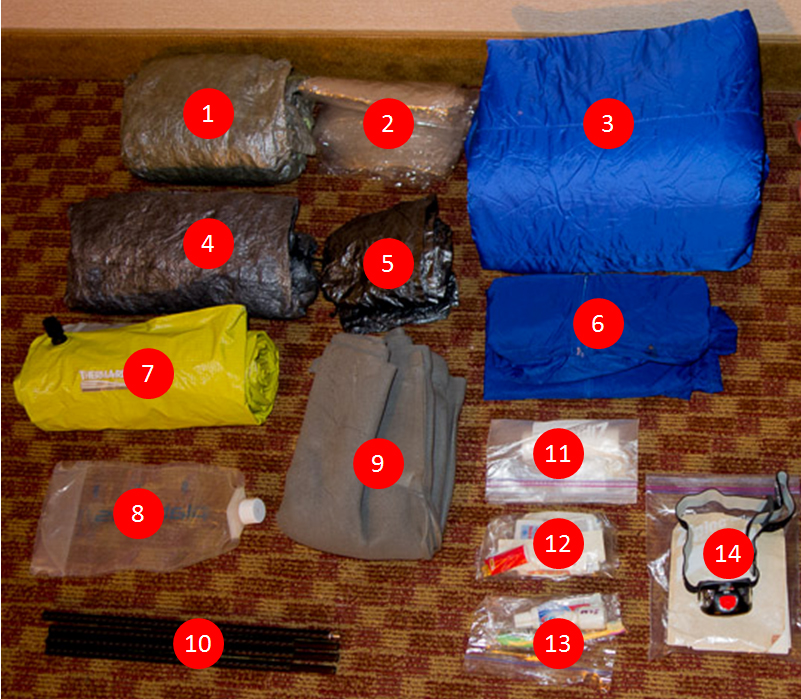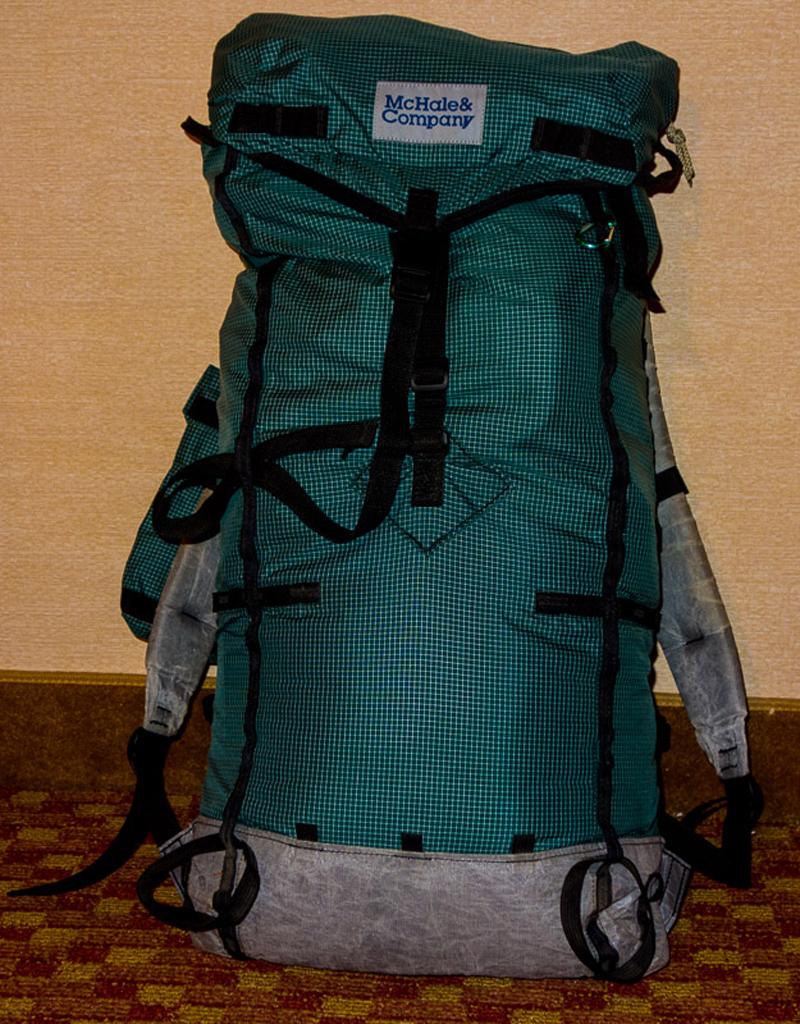IT’S NOT A BIG DEAL
Thought I’d share how I plan my trips, because it seems to me that many folks spend way too much time planning their trips. This is what works for me.
I travel a lot for business. This affords me the opportunity to hike in many varied locations throughout the United States. This summer I have already hiked in California, Nevada, Illinois, Georgia, North Carolina, Massachusetts, and Rhode Island. If I had planned for each trip the way I see some people do it, I wouldn’t have had time to actually go hiking.
I see people posting questions on the Internet asking about where should they go, what should they bring, what if this happens, what if that happens, etc. etc.
I see people spending months planning for a short trip of a few days or maybe a week or two at most. They could have spent all those months of angst actually backpacking.
Because many of my business trips are scheduled with short notice, there is little time to plan for a backpacking trip. I have learned how to quickly locate good trails and campsites, and how to quickly assemble the proper gear.
The exception is when planning longish trips that are mostly off-trail in remote locations. For these trips my planning is thorough and detailed – but this is not the typical trip for most people.
For most trips, whether planning near home or a spur of the moment adventure to somewhere on the other side of the country this is how I generally do it…
There are a few key steps in preparing for a trip
- Where are you going?
- When will you go?
- How far is the hike?
- What do you need to bring?
When and where will determine weather, terrain, elevation, water availability, etc.
How far (distance) will determine the amount of food, water, fuel, and other variables.
What you need to bring depends on the first three.
THE END IS THE BEGINNING
The organized mind-set
Before you think about your next trip, you should have cleaned, repaired, washed, and properly stored all your gear and equipment from your last trip. This way it is ready for the next trip and can be assembled in a few minutes.
Common items for every trip
On almost every trip I take certain standard items. This would include such things as my first aid kit, personal items (toothbrush/paste, toilet paper/trowel, compass, etc.), and Houdini wind shirt. I often just leave them in my backpack. If my next trip requires a different pack, I transfer the items.
Storing other items by bin location
I have a couple favorite stoves, a couple favorite pots, a supply of Esbit fuel, a supply of water purification tablets, other miscellaneous things that are frequently used; but not necessarily on every trip. I keep all of them in a single plastic bin.

I also store clothes by category in bins. Winter clothing and gloves are in a single bin. Water bottles are kept in a separate bin. Shelters are stored on a designated shelf, as are sleeping pads. Sleeping bags are stored in large cotton bags. This way it is easy to locate specific items right away.

Down clothing is stored in a section of my closet. My favorite hiking clothes are stored in a drawer (Rail Riders Eco Speed T, Patagonia Baggie shorts, Rail Riders Eco-Mesh shirt and pants). All my hiking socks have their own personal drawer.
Backpacks are stored in a special location.
Again, it is easy to locate every item I need for a specific trip; all I need to do is generate a gear list.
GEAR LISTS
Every time I go on a trip I create a gear list to make sure I bring everything I need – basically it is to ensure nothing important is left behind, and that anything not needed is left at home. I use an Excel workbook for this. For each trip I save the gear list as a separate worksheet. This way I can choose specific gear lists used in the past to create a trip-specific gear list.

Let’s say I did a desert trip in March of 2012 and want to do a similar trip the following year around the same time. I open the gear list I used in March of 2012, see if I made any notes for needed changes, and then save the worksheet as my new gear list for the current trip (with any needed changes). This makes it simple to pick all the right gear.
This summer I have done a lot of hiking in the north east. I simply take the same gear on every trip.
FOOD
I like hot meals for breakfast and dinner, which means I need a stove (or a fire). I hate cooking on fires and it is not legal in many places. Fuel cannot be carried on airplanes, but it can be shipped via USPS when properly labeled. Also fuel for a specific stove may or may not be available at my destination. Lastly some types of stoves may not be permitted where I am going. So for most trips taken in conjunction with my business trips I just go to a supermarket upon arrival and purchase non-cook foods. If I really need or want to cook, I will ship fuel to my hotel or make sure a large outdoor retailer is located close by.
WHERE TO HIKE
Often there is not much time to do detailed planning. Before leaving home I will look at the area on the Internet and see if there is a well known trail nearby, such as the Appalachian Trail. One thing I make sure I do is to figure out the worst weather I may encounter, especially in winter or in mountains that are subject to foul weather.
I won’t make a lot of plans until I actually get to my destination. Once I arrive I may talk to local people or spend a little more time researching the Internet. Obtaining topo maps on short notice is usually too time consuming; but sometimes I will download a free USGS topo map and take it to a place like Staples to have it printed – if there is time or if there is a store that can print it. Sometimes I just use a road map provided for free by Hertz, or purchase a road map at a gas station to get me to a general area. As much as I dislike electronics, I might download a map to my iPhone and use that.
PACKING AND TRANSPORTING GEAR
On most trips I just put my backpack into my suitcase, along with my business clothes, and check the entire works with the airline. If I need several suits and other business attire for a long business trip, I may check my backpack as a separate luggage item.
A SAMPLE TRIP
Recently I found myself in the northern Rhode Island / southern Massachusetts area. Talking with people who were familiar with area directed me to suitable hiking.
 Above: Complete hiking kit along with business clothes fit nicely in the full size Briggs and Riley suitcase. Notice the standard Hampton Inn carpet
Above: Complete hiking kit along with business clothes fit nicely in the full size Briggs and Riley suitcase. Notice the standard Hampton Inn carpet
 Above: Laying out my gear in the hotel room.
Above: Laying out my gear in the hotel room.
1. zPacks Hexamid shelter
2. Gossamer Gear Polycro groundsheet
3. Sleeping quilt
4. zPacks poncho/groundsheet (not used as a groundsheet for most trips)
5. zPacks rain skirt
6. Patagonia Houdini wind shirt
7. Thermarest Neo Air mattress
8. 1 liter Platypus water bottle (a 2nd one is in the pack)
9. 1/8” x 20” x 72” foam mat (folded to fit inside pack)
10. Carbon fiber tent pole
11. Toilet paper, matches, and Titanium cat trowel
12. First aid kit and a mini BIC lighter
13. Toothbrush, toothpaste, and hand soap
14. Headlamp, Hertz map, compass, and some Leuko tape
 Above: Hiking clothes
Above: Hiking clothes
15. New Balance Minimus trail shoes
16. Darn Tough brand wool socks
17. REI eVent baseball cap
18. REI T-shirt
19. Generic nylon hiking shorts
All packed up and ready to go.
